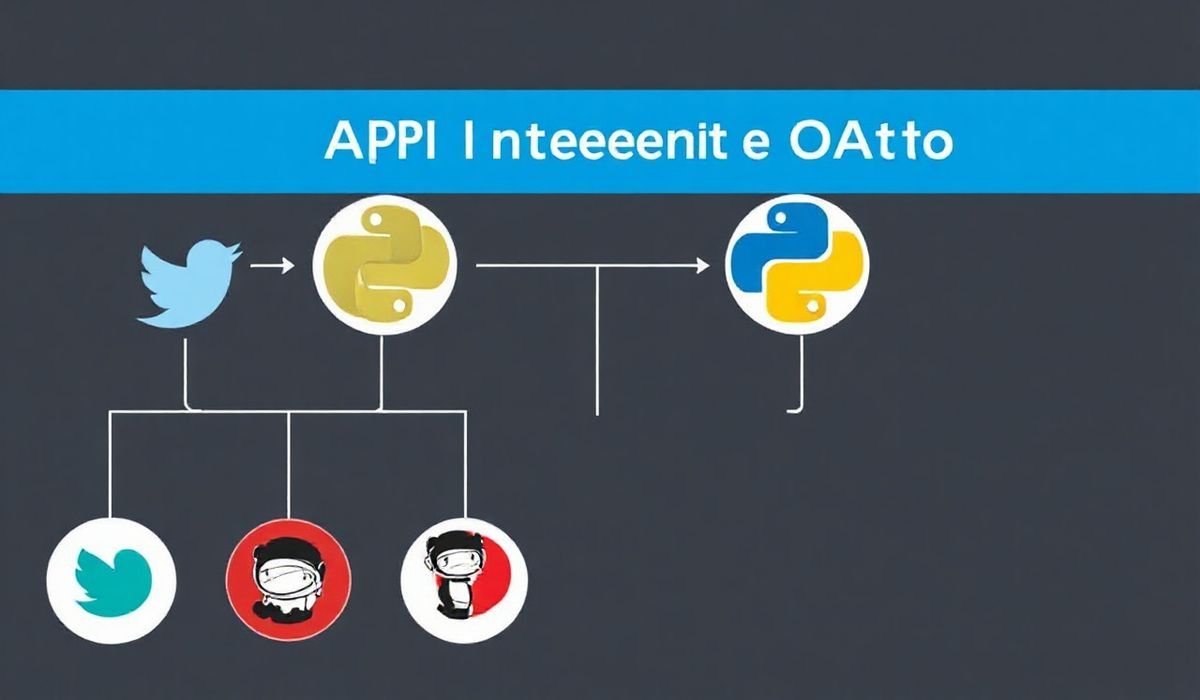The Requests-OAuthlib library is a versatile tool designed to simplify the process of connecting Python applications to third-party APIs that use OAuth for authorization. With seamless integration of the requests library and OAuth working together, it offers a user-friendly interface to handle OAuth 1 and OAuth 2 tokens. Whether you’re integrating with APIs like Google, Twitter, or GitHub, this library streamlines token management and API authentication.
In this blog post, we’ll dive deep into “requests-oauthlib”, learn how to authenticate with OAuth 1 and OAuth 2, and explore step-by-step coding examples of using this library with the APIs. Let’s also build a practical application example at the end!
Installing Requests-OAuthlib
Before we get started, you need to install the library:
pip install requests-oauthlib
Authenticating with OAuth 1
OAuth 1 is commonly used for older APIs like Twitter. Here’s an example of accessing a resource using OAuth 1:
from requests_oauthlib import OAuth1Session
# Replace the below values with your credentials
consumer_key = "your_consumer_key"
consumer_secret = "your_consumer_secret"
access_token = "your_access_token"
access_token_secret = "your_access_token_secret"
# Create an OAuth1Session
oauth = OAuth1Session(
consumer_key,
client_secret=consumer_secret,
resource_owner_key=access_token,
resource_owner_secret=access_token_secret
)
# Access a protected resource
response = oauth.get('https://api.twitter.com/1.1/statuses/user_timeline.json')
print(response.json())
Authenticating with OAuth 2
OAuth 2 is simpler and used by most modern APIs. Here’s an example of using the library with OAuth 2:
from requests_oauthlib import OAuth2Session
client_id = "your_client_id"
client_secret = "your_client_secret"
authorization_base_url = 'https://provider.com/oauth/authorize'
token_url = 'https://provider.com/oauth/token'
# Redirect user to provider for authorization
oauth = OAuth2Session(client_id)
authorization_url, state = oauth.authorization_url(authorization_base_url)
print('Please go to %s and authorize access.' % authorization_url)
# Get the authorization response URL from the user
redirect_response = input('Paste the full redirect URL here: ')
# Fetch the access token
token = oauth.fetch_token(
token_url,
authorization_response=redirect_response,
client_secret=client_secret
)
# Access protected resources
response = oauth.get('https://provider.com/api/resource')
print(response.json())
Using Refresh Tokens
Some OAuth 2 workflows provide refresh tokens to keep your access scope active. Here’s how to use them:
token = {
'access_token': 'existing_access_token',
'refresh_token': 'your_refresh_token',
'token_type': 'Bearer',
'expires_in': '-30' # Simulate expired token
}
extra = {
'client_id': client_id,
'client_secret': client_secret,
}
# Auto-refreshing token functionality
oauth = OAuth2Session(client_id, token=token, auto_refresh_kwargs=extra,
auto_refresh_url=token_url, token_updater=lambda x: None)
# Access protected resources
response = oauth.get('https://provider.com/api/resource')
print(response.json())
A Practical Application Example
Let’s create a real-world example: a GitHub Repository Lister. This app will authenticate with GitHub using OAuth 2 and fetch repositories for the authenticated user.
from requests_oauthlib import OAuth2Session
CLIENT_ID = 'your_github_app_client_id'
CLIENT_SECRET = 'your_github_app_client_secret'
AUTH_URL = 'https://github.com/login/oauth/authorize'
TOKEN_URL = 'https://github.com/login/oauth/access_token'
# Step 1: Redirect user to authorize the app
github = OAuth2Session(CLIENT_ID)
authorization_url, _ = github.authorization_url(AUTH_URL)
print(f'Please go to {authorization_url} and authorize access.')
# Step 2: Receive the callback from the user
redirect_response = input('Paste the full redirect URL here: ')
# Step 3: Retrieve the access token
token = github.fetch_token(
TOKEN_URL,
authorization_response=redirect_response,
client_secret=CLIENT_SECRET
)
# Step 4: Fetch user's repositories
response = github.get('https://api.github.com/user/repos')
repos = response.json()
print('Your Repositories:')
for repo in repos:
print(f"- {repo['name']}: {repo['html_url']}")
The Requests-OAuthlib library provides convenience when dealing with complicated OAuth workflows. Whether you’re accessing APIs for personal projects or professional applications, mastering this library ensures you secure data seamlessly and efficiently.




